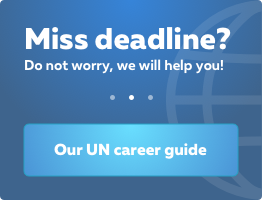Mission and objectivesThe World Health Organization (WHO) was established on 7 April 1948 as the directing and coordinating authority in global public health within the United Nations system. The objective of WHO is the attainment by all peoples of the highest possible level of health. Missions of WHO are to promote health, keep the world safe, and serve the vulnerable. The Lao People’s Democratic Republic joined WHO on 17 May 1950, when it was one of the Associate States of the French Union. The Republic became independent when French Indochina was dissolved in 1954. The Lao People's Democratic Republic was covered by the WHO Area Representative Office in Saigon, Viet Nam from 1956 to 1 January 1968, when the WHO Representative Office in Vientiane, Lao People's Democratic Republic was established. Before the establishment, the WHO Country Liaison Office was administered by the WHO Representative Office in Saigon. A WHO Country Liaison Office was first established in the Lao People’s Democratic Republic in 1962, and it was later expanded into a WHO Representative Office in 1968. The early days were historically challenging for the health sector, but WHO built a strong partnership with the Government of the Lao People’s Democratic Republic and the Ministry of Health, based on mutual trust. Over the years, the scale and scope of WHO partnerships have grown exponentially. From fewer than 20 staff when WHO opened its first office, to the more than 50 international and national staff members and more than 100 non staff members, WHO maintained continuity and uninterrupted presence as the country underwent political and economic changes.
ContextIn the face of a myriad of challenges, including disease outbreaks and disasters, Lao PDR has been able to make significant improvements to health. However, the country faces future risks that could impede progress, including climate change, a challenging fiscal environment, and a transition from least developed countries (LDC) status with large implications to international cooperation (Lao PDR has sustained robust economic growth since 2010 and aims to graduate from Least Developed Country status by 2026). Consequently, many institutional donors have planned to gradually phase out support as well as national contributions increase. However, a high debt burden and inflation have left government fiscal space extremely limited, with reductions in budget across all sectors including health since 2020. With demographic and economic transitions underway and increasing health needs, strong health sector coordination and support to improve or streamline funding for the health sector -both to WHO and beyond- is critical. Similarly, as the context changes, strong engagement with WHO partners and donors is critical, including communications, visibility, reporting and relationship management. Additionally, despite these challenges, Lao PDR has made significant health progress in many areas, including disease elimination, having eliminated polio, lymphatic filariasis and trachoma – and is closing the gap on malaria and schistosomiasis, aiming to eliminate these by 2030, with significant support from the China International Development Cooperation Agency (CIDCA) and China Global Development and South-South Cooperation Fund (GDF) via WHO, jointly between Lao PDR and Cambodia.
Task DescriptionUnder the direct supervision of the Technical Officer, Communications for Health / Coordination, the UN Volunteer will undertake the following tasks: · Manage and coordinate (with other colleagues) plans, strategies and activities (including events and campaigns) for priority strategic communications matters (such as high-level events and campaigns, issues of national importance), implement plans and related communication activities, and support key flagship health days and other related events, routine vaccination campaigns etc. · Raise the visibility of WHO's work done in country, with partners like Ministry of Health, donors, and development partners on priority health sector issues, inter-agency coordination, disease elimination, and other important public health issues. · Provide dedicated communications assistance to WHO Lao PDR’s CIDCA/GDF largescale schistosomiasis-elimination project, including supporting content development, media engagement (Lao and Chinese media), liaison with WHO China Country Office on communications matters, Mandarin-English translation and interpretation, identifying opportunities for project visibility in regional, national and Chinese outlets, social media content creation, and additional communications tasks as required. · Support Lao/Cambodia coordination of multi-country communications activities relating to WHO Lao PDR’s CIDCA/GDF large-scale schistosomiasis-elimination project with WHO Cambodia, and relevant stakeholders. · Support development of communication materials such as press releases, talking points, website news stories and features, photos, videos and social media posts in English and Mandarin. · Support WHO staff with donor rapport and fostering partnerships with existing and prospective donors/partners in Lao PDR, including the Chinese Embassy · The UN University Volunteer will support other activities in the Communications for Health team as required.
Competencies and values☒ Building Trust ☒ Client Orientation ☒ Communication ☒ Creativity ☒ Planning and Organizing ☒ Professionalism ☒ Working in Teams
Living conditions and remarksLao PDR is a landlocked country bordering Thailand, Cambodia, Myanmar, Viet Nam, China. The total population of Lao PDR is about 7.5 million in 2022 with around 60% of the population living in rural areas. In 2011, Lao PDR reached the status of a lower-middle income country according to the World Bank classification. Gross national income (GNI) per capita and gross domestic products (GDP) per capita amounted to 2,520 USD and 2,551 USD in 2021. The climate is a tropical savannah climate with high temperatures and there are two seasons including the rainy season (May to mid-October) and dry season (mid-October to April). Lao PDR has more than 60 ethnic groups with their own customs and dialect. Many expats think that the Lao people are sociable, kind, and polite. The cost of living is moderate and food cost is generally low. Most transactions are made in Lao kip or US dollars and Thai baht.


